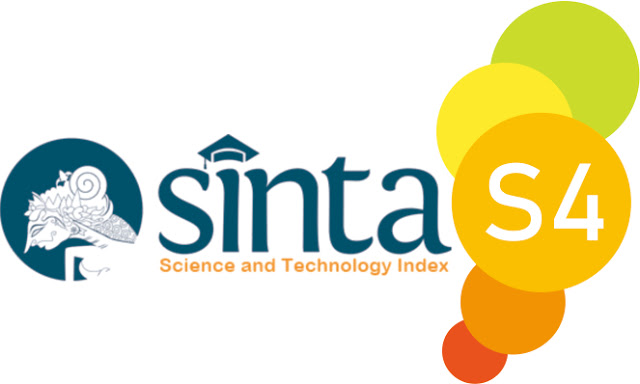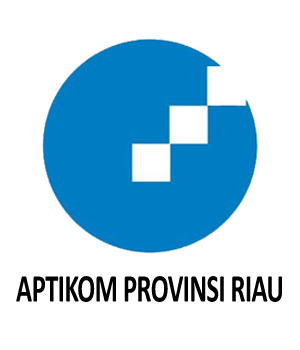Combination, Pola, Apriori ANALISIS POLA BELANJA KONSUMEN MENGGUNAKAN ALGORITMA APRIORI PADA RAFFA PHOTOCOPY
Abstract
Raffa Photocopy is a shop that started its business in 2016. This business not only provides photocopy services, but also provides office stationery and school supplies. Every day there are sales transactions where the recording of goods sold has a relationship between one another, because in recording sometimes consumers do not just buy one item, but two items even more as when buying a book, it is likely that consumers also buy a pen. This recording is only stored as an archive by Raffa Photocopy, even though the number of sales transactions that occur every day can lead to a pile of data. One effort to increase sales at Raffa Photocopy can be done by processing transaction data that overlaps by using data mining association techniques. This association rule technique uses the Apriori algorithm which deals with the study of 'what is with what' or discovers the association pattern of items that are often bought. The results of this study in the form of rules include the first, if you buy an eraser, it is likely that consumers also buy notebooks simultaneously. Second, if you buy Tipex, then consumers also buy a double folio. The results of the Apriori algorithm process are based on a minimum support value of 35% and a minimum confidence value of 80%.
Downloads
References
A. Simamora, “Pengangguran Makin Banyak di Batam. Jumlah Pencari Kerja Capai 89.500 Orang,” tribunbatam.id, 2018.
E. C. N. Gilang Gemilang Wahyu Aji Wijaya, “Sistem Informasi Toko Alat Tulis dan Fotocopy Bengawan,” J. Ilm. GO INFOTECH, vol. 19, no. 1, pp. 14–20, 2013.
I. Oktana and S. Hansun, “Penerapan Algoritma C4.5 pada Analisis Kerusakan Barang Jadi ( Studi Kasus : PT Kayu Lapis Asli Murni ),” Ultim. Comput., vol. VII, no. 1, 2015.
Hapsari Dita Anggraeni, Ragil Saputra, and Beta Noranita Ilmu, “Aplikasi Data Mining Analisis Data Transaksi Penjualan Obat Menggunakan Algoritma Apriori (Studi Kasus di Apotek Setya Sehat Semarang),” Masy. Inform., vol. 4, no. 7, pp. 1–8, 2012.
E. S. Sihombing, A. S. Honggowibowo, and D. Nugraheny, “Implementasi Data Mining Menggunakan Metode Apriori Pada Transaksi Penjualan Barang (Studi Kasus Di Chorus Minimarket),” Compiller, vol. 1, no. 1, pp. 17–30, 2012.
P. Informatika and B. Darma, “APLIKASI DATA MINING UNTUK MENAMPILKAN TINGKAT KELULUSAN MAHASISWA DENGAN ALGORITMA APRIORI,” no. 911536, pp. 56–61, 2014.
M. Le Cam, A. Daoud, and R. Zmeureanu, “Forecasting electric demand of supply fan using data mining techniques,” Energy, vol. 101, pp. 541–557, 2016.
W. Pramusinto, W. Budi, and U. Gunawan, “Implementasi Algoritma Apriori untuk Aplikasi Data Mining Informasi Manfaat Asuransi Jiwa Studi Kasus : Pada PT Azarel Jelia Sejahtera,” TICOM, vol. 2, no. 1, pp. 43–50, 2013.
H. Santoso, I. P. Hariyadi, and Prayitno, “Data Mining Analisa Pola Pembelian Produk dengan Menggunakan Metode Algoritma Apriori,” Semin. Nas. Teknol. Inf. dan Multimed. 2016, pp. 19–24, 2016.
H. D. Hutahaean, B. Sinaga, and A. A. Rajagukguk, “Analisa Dan Perancangan Aplikasi Algoritma Apriori Untuk Korelasi Penjualan Produk ( Studi Kasus : Apotik Diory Farma ),” JIPN (Journal Informatics Pelita Nusantara), vol. 1, no. 1, pp. 7–13, 2016.
Nurdin and D. Astika, “Penerapan Data Mining Untuk Menganalisis Penjualan Barang Dengan Pada Supermarket Sejahtera Lhokseumawe,” Techsi, vol. 6, no. 1, pp. 134–155, 2015.
Nurjoko and A. Darmawan, “Penerapan data mining menggunakan association rules untuk mendukung strategi pemasaran calon mahasiswa baru (studi kasus ibi darmajaya),” J. TIM Darmajaya, vol. 1, no. 1, pp. 17–32, 2015.
This is an open-access article distributed under the terms of the Creative Commons Attribution-ShareAlike 4.0 International License which permits unrestricted use, distribution, and reproduction in any medium. Users are allowed to read, download, copy, distribute, search, or link to full-text articles in this journal without asking by giving appropriate credit, provide a link to the license, and indicate if changes were made. All of the remix, transform, or build upon the material must distribute the contributions under the same license as the original.















